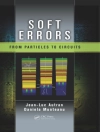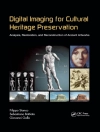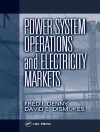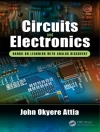Electrokinetics is a term applied to a group of physicochemical phenomena involving the transport of charges, action of charged particles, effects of applied electric potential and fluid transport in various porous media to allow for a desired migration or flow to be achieved. These phenomena include electrokinetics, electroosmosis, ion migration, electrophoresis, streaming potential and electroviscosity. These phenomena are closely related and all contribute to the transport and migration of different ionic species and chemicals in porous media. The physicochemical and electrochemical properties of a porous medium and the pore fluid, and the magnitudes of the applied electrical potential all impact the direction and velocity of the fluid flow. Also, an electrical potential is generated upon the forced passage of fluid carrying charged particles through a porous medium.
The use of electrokinetics in the field of petroleum and environmental engineering was groundbreaking when George Chilingar pioneered its use decades ago, but it has only been in recent years that its full potential has been studied. This is the first volume of its kind ever written, offering the petroleum or environmental engineer a practical ‘how to’ book on using electrokinetics for more efficient and better oil recovery and recovery from difficult reservoirs.
This groundbreaking volume is a must-have for any petroleum engineer working in the field, and for students and faculty in petroleum engineering departments worldwide.
Tabella dei contenuti
Preface xiii
1 Introduction to Electrokinetics 1
1.1 Factors Influencing Electrokinetic Phenomena 2
1.2 Zeta Potential and the Electric Double Layer Interaction 3
1.3 Coehn’s Rule 8
1.4 Combined Flow Rate Equation 9
1.5 Dewatering of Soils 11
1.6 Use of Electrokinetics for Stabilization of Week Grounds 13
1.7 Bioelectroremediation 14
1.8 Electrical Enhanced Oil Recovery (EEOR) 16
1.9 Improving Acidizing of Carbonates 18
1.10 Economic Feasibility 20
1.11 Releasing Stuck Drillpipe 22
1.12 Summary 23
Bibliography 24
2 Reduction of Contaminants In Soil and Water By Direct Electric Current 33
2.1 Introduction 33
2.2 Overview of Direct Electric Current in Subsurface Environmental Mitigation 34
2.3 Electrokinetically-Aided Environmental Mitigation 54
2.4 Transport and Extraction of Crude Oil 83
2.5 Summary and Conclusions 92
References 94
3 Application of Electrokinetics for Enhanced Oil Recovery 103
3.1 Introduction 103
3.2 Petroleum Reservoirs, Properties, Reserves, and Recoveries 105
3.3 Relative Permeability and Residual Saturation 107
3.4 Enhanced Oil Recovery 109
3.5 Electrokinetically Enhanced Oil Recovery 110
3.6 DCEOR and Energy Storage 112
3.7 Electro-chemical Basis for DCEOR 115
3.8 Role of the Helmholtz Double Layer 119
3.9 DCEOR Field Operations 126
3.10 DCEOR Field Demonstrations 132
3.11 Produced Fluid Changes 138
3.12 Laboratory Measurements 140
3.13 Technology Comparisons 144
3.14 Summary 146
Nomenclature 148
References 149
Websites 155
4 EEOR in Carbonate Reservoirs 157
4.1 Introduction 157
4.2 Electrically Enhanced Oil Recovery (EEOR) – EK Assisted WF 158
4.3 SMART (Simultaneous/Sequential Modified Assisted Recovery Techniques) 159
4.4 (SMAR EOR) Electrokinetic-Assisted Nano-Flooding/Surfactant-Flooding 161
4.5 Electrokinetics-Assisted Waterflooding with Low Concentration of HCl 166
4.6 Effect of EEOR and SMART EOR in Carbonate Reservoirs at Reservoir Conditions 168
Conclusions 171
Nomenclature 172
References 173
5 Mathematical Modeling of Electrokinetic Transport and Enhanced Oil Recovery in Porous Geo-Media 177
5.1 Introduction 177
5.2 Basics of EK Transport Modeling 178
5.3 Fundamental Governing Equations 179
5.4 Mathematical Model and Solution of Ek Transport 188
5.5 EK Mass Transport Models 191
5.6 Coupling of Electrical and Pressure Gradients 194
5.7 Mathematical Modeling of EKEOR 197
5.8 Fundamental Governing Equations for EKEOR Model 197
5.9 Solution Strategy 220
5.10 Numerical Implementation 224
5.11 Summary 229
References 229
Index 237
Circa l’autore
George V. Chilingar, Ph D, is an Emeritus Professor of Engineering at the University of Southern California, Los Angeles, CA. He is one of the most well-known petroleum geologists in the world and the founder of several prestigious journals in the oil and gas industry. He has published over 70 books and 500 articles and has received over 100 awards over his career.
Mohammed Haroun, Ph D, graduated from the University of Southern California and is known for his hybrid work in petroleum and environmental engineering.? He has written numerous papers, a book, and he has several patents to his name.












